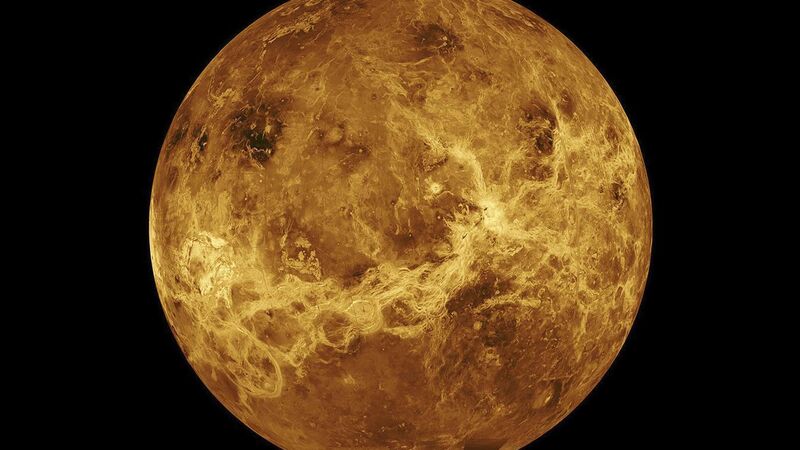Sky Matters: On one evening of February, the Moon will be nicely positioned between Venus and Jupiter

This image made available by NASA shows the planet Venus made with data from the Magellan spacecraft and Pioneer Venus Orbiter. On Wednesday, June 2, 2021, NASA’s new administrator, Bill Nelson, announced two new robotic missions to the solar system's hottest planet, during his first major address to employees. (NASA/JPL-Caltech via AP)
Comets are enigmatic objects. They are loose aggregates of dust and water-ice infused with a complex mix of trapped gases which get released when warmed by the Sun to produce massive tails that can stretch for millions of kilometres – though you could pass right through them without even noticing. Throughout history and across cultures they have evoked responses of fear or terror, their appearance usually being interpreted as ominous portents.
The English astronomer Edmund Halley is commonly credited with being the first person to definitively predict the return of a comet, one that now famously carries his name. He used the relatively new “Laws of Gravitational Motion” from Isaac Newton to show that appearances of comet Halley had been visually recorded every 75-76 years by different civilizations without anyone previously realising it was the same comet. By doing so, he showed that comets have orbits that are (largely) predictable, just like planets.
The recent appearance of comet C/2022 E3 (ZTF) – not exactly a catchy name – enabled astronomers to calculate that it would have last passed through our neck of the solar system about 50,000 years ago. Not surprisingly there are no records of that visit, but it has been bright enough this time to catalyse a veritable avalanche of media coverage. Brightest in early February, this fast-moving comet will have faded by the end of the month as it heads back out into space, having passed closest to the Sun on 12th January and the Earth on 1st February. Interestingly, astronomers estimate that the trajectory of the comet has changed in the last 50,000 years and it appears to be on a journey that will take it out of the solar system, never again to be seen and destined to wander amongst the stars with trillions of other lonely comets. The actual prediction of its orbit is complicated because the gases which form those beautiful cometary tails also nudge a comet in its orbit in a way which is impossible to predict accurately. And even a small nudge can have a massive influence on its orbit.
It may be somewhat ironic that comets received a lot of bad press from our ancestors. The irony is that some of the water that exists in Earth’s oceans was brought by comets some 4 billion years ago. That was the time when the Earth was beginning to settle into its early adolescence, but still so hot from its birth that any water initially present would have evaporated from its surface. Evidently the water we see today had to come from somewhere and one source would have been collisions with comets. Rather than playing the role of the bad guys who destroy all around them, it looks like comets played more of a role of being a star in the story of making life on Earth possible!
Comet C/2022 E3 (ZTF) is the most promising comet we know of in 2023. There is, however, always the possibility that a previously unknown comet will blaze a trail across our skies, lurking darkly in the freezing depths of space and lying as yet unseen by our telescopes. In the absence of such an apparition we can still enjoy some of the more predictable, but arguably no less beautiful, celestial spectacles. Venus will be a prominent evening object all month in the western evening sky along with Jupiter (slightly less bright). On the evening of February 22 the Moon will be nicely positioned between Venus (to its lower right) and Jupiter (to its upper left). It’s a great opportunity for any budding astrophotographer to capture the hottest planet (Venus) and the largest (Jupiter) alongside our nearest celestial neighbour.
By the time February comes to a close our skies will be devoid of visible comets. But we now know that somewhere out in the darkness another comet is falling sunward towards its moment of glory.







